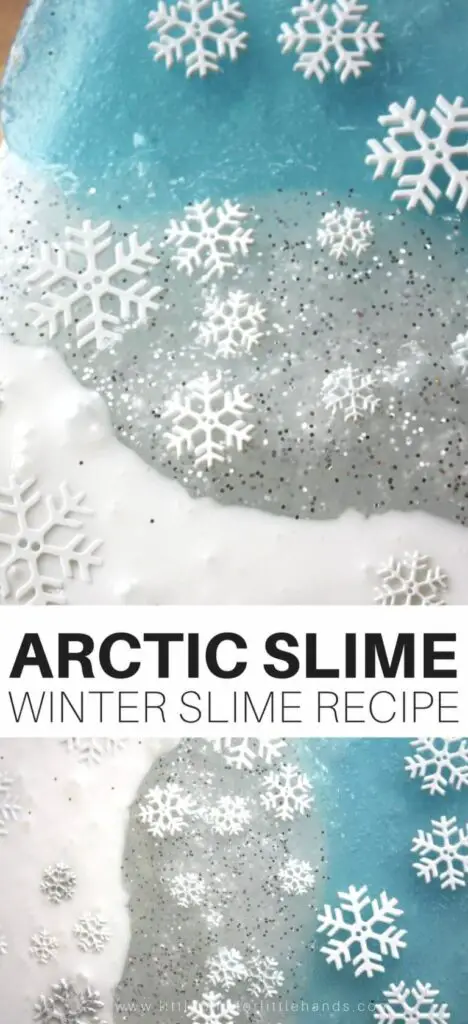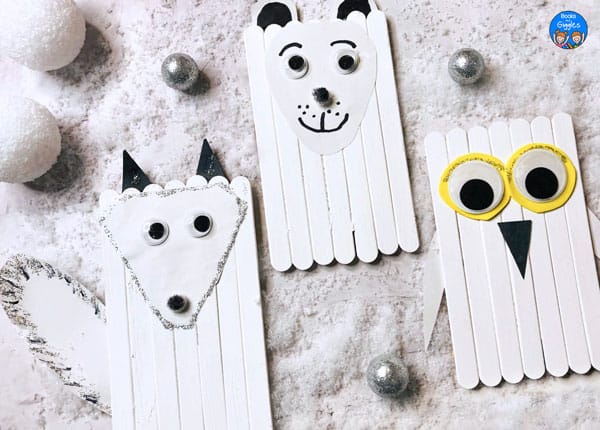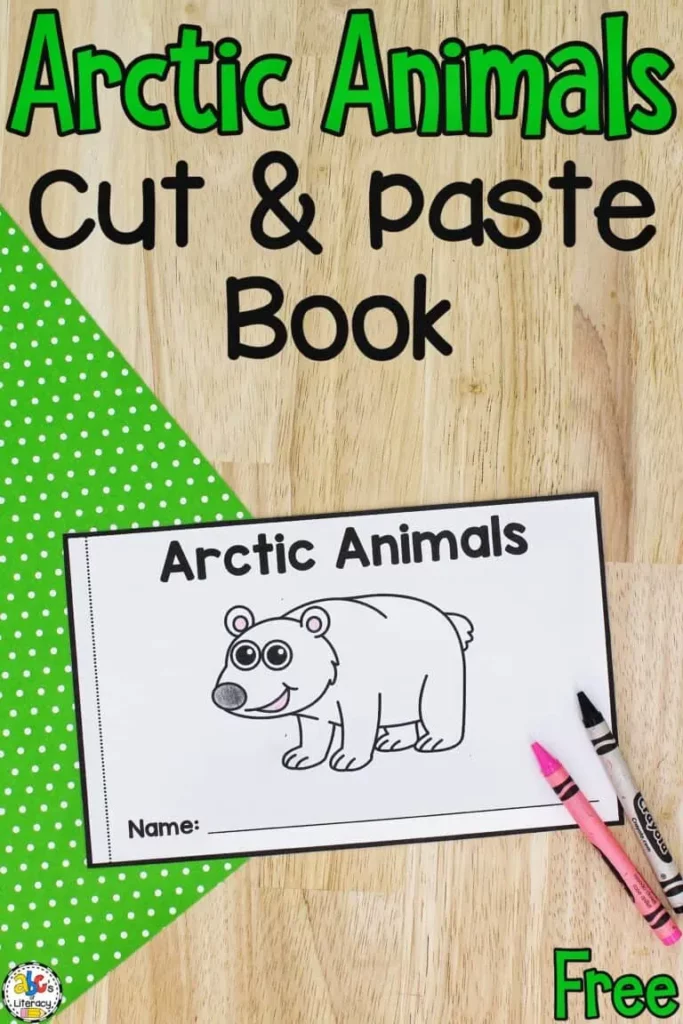Though cold and desolate, the Arctic Region is known to be a sanctuary for many animals despite its extreme weather conditions. Most of these animals are built to adapt to these ice-cold situations.
Explore the wonders of the Arctic and the amazing animals that survive in these areas. These ten activities showcasing these Arctic animals will warm the children’s hearts.

A great way to introduce this topic to children is to build their background knowledge. What better way than to use books that present scientific facts on the different types of animals and their lives in the Arctic?
Children will learn vocabulary words relating to the topic, learn vital information about the animals, and appreciate the wonders these animals bring.
Twenty books showcase the different animals, including endangered ones on the list. Some of these are land animals, while others live in icy waters.
“Animal Babies in Polar Lands” by the Editors of Kingfisher presents close-up photos of real-life baby animals living in the region. The narration starts with a description of the baby in the picture and is presented in a riddle format.
Next, it asks readers to guess who its mother is. As the reader flips to the next page, the mother of the baby animal is revealed with a description showing similarity or contrasting features.
Add to their mountain of knowledge by using videos, if possible, to show how these animals interact with their mothers in real life.
For more information on this activity, go to GiftToCuriosity.com.

A catchy melody and easy lyrics will help children better remember the concepts they are learning. Songs that feature different Arctic animals are a hit among children who like to sing and dance.
These songs teach children the names and characteristics of the animals. This is a great idea to go with a Science lesson that focuses on a specific animal.
For example, Raffi’s song “Baby Beluga” mentions that a baby beluga is a white whale. It talks about having a spout that squirts water, a characteristic shared by different species of whales.
Show children a video of the song and let them sing with it. Create simple movements that perfectly go with the lyrics, such as raising both arms for “heavens above” and placing both arms down for “sea below.”
This step will help children improve their gross motor skills as they copy movements.
Make it more interactive by allowing to answer the questions in the lyrics, such as “Is the water warm?” As children respond no, they will remember that the Artic region’s water is very cold.
For more information on this activity, go to LivingMontessoriNow.com.

Create a slime that resembles the condition in the Arctic region through this activity. This winter slime will provide children with a wonderful sensory experience as they squeeze, stretch, and fold it.
The use of snowflake confetti in different will allow children to compare their sizes and designs or even count them. This slime is also a great addition to centers. It is perfect for schools in warm regions where it does not snow.
The site suggests adding plastic toy animals, such as polar bears and others. Children will have fun locating where the animal is hidden in the slime.
Make the slime by thoroughly mixing half a cup of water and half a cup of glue. Next, add enough drops of food color until the desired shade is achieved. Add the glitter and confetti at this stage.
Add a quarter cup of liquid starch to incorporate it into the mixture. Stir this well until no liquid is visible. Now, knead the mixture until it is stretchy and no longer stringy.
For this activity, you will need:
- White glue
- Liquid starch
- Water
- Measuring cup
- Food coloring
- Bowls
- Spoon
- Glitter
- Snowflake confetti
For more information on this activity, go to LittleBinsForLittleHands.com.

This adorable and versatile craft can be turned into three different arctic animals for children to make and enjoy. Cutting, painting, and gluing together the pieces to complete the animal craft will help improve children’s fine motor skills.
Use this craft for a science lesson on how these animals survive and adapt in cold regions. Talk about physical changes, such as their fur color changes during the winter season. Discuss how their behavior changes in the cold.
Glue together the seven craft sticks. Attach the two mini craft sticks on the back as support. Once the glue dries, paint it white and let it dry. Decide what animal to make-a fox, an owl, or a polar bear.
Download and print the free animal template from the site. To make the fox, cut out the template and trace the head and tail on white construction paper. Trace the two ears on black paper.
Cut out these pieces. Snip the tail of the fox and add glitter glue. Outline the head with glitter glue and stick the googly eyes. Once these are dry, glue the parts on the craft stick.
For this activity, you will need:
- Printed animal template
- Seven regular-sized craft sticks
- Two mini craft sticks
- Paint
- Paintbrush
- Construction paper
- Scissors
- Glue
- Googly eyes
- Pompom
- Markers
- Glitter glue
For more information on this activity, go to BooksAndGiggles.com.

Integrate sensory play with the topic of Arctic animals for children to have a deeper understanding of how these animals live in the colder regions of the world. This activity uses readily available materials but requires some preparation.
As children play, they can associate the words and meanings of cold, ice, and freezing with these animals. It will give them an idea about how these animals survive in their habitats.
Make an icy habitat by pouring water into a tub or bin that will fit in the freezer. Remember not to fill the container as it will be too heavy and dangerous if it falls off the table during play.
Place a heavy object on one side of the container that can be easily removed once the water turns into ice. This step will create a depression in the icy land for the water animals, such as the orca and beluga whales, to swim in.
Refer to the pictures on the site for this step. Freeze until the ice is hard. Take out the container from the freezer and get the heavy object off the ice.
The site recommends placing the heavy ice-filled bin on the floor or a sturdy table to prevent accidents.
Place the land animals, such as the polar bear, caribous, and wolves, on the ice. Put the water animals in the depressed part of the ice. Water may be added to keep the animals submerged.
For this activity, you will need:
- Arctic animals’ plastic toys
- A bin
- A heavy object
For more information on this activity, go to NoTimeForFlashcards.com.

Here’s a science experiment that explains how animals like whales and polar bears can survive the extremely low temperature in the Arctic region. The answer is a thick layer of fat called blubber.
As children try to answer the question through this experiment, they will need to perform a sensory activity that will give them first-hand experience with how difficult it is for animals to survive in the cold.
Make the blubber in advance by placing a good amount of shortening in a Ziploc bag. Place this in a second Ziploc bag. Ask the child to place one hand inside the second Ziploc bag without directly touching the shortening.
Next, have the child dip a hand in the iced water for comparison. Ask the children what it feels like. Next, have the child place the hand in the blubber into the iced water. Ask which hand is colder and have the child describe the experience.
Explain the concept of blubber to the children. Show pictures of animals that can survive the cold because of this layer of fat.
For this activity, you will need:
- Ziploc bags
- Shortening
- A bowl of iced water
For more information on this activity, go to StayAtHomeEducator.com.

This free coloring book shows different animals that live in the Arctic. This printable teaches about Arctic animals and helps children improve their fine motor skills through coloring.
The coloring book has seven pages and features twelve animals, including different types of seals, whales, birds, and other animals. It has a title page and an illustration showing where the Arctic region is.
Use this book as a supplement for children to work on after a Science lesson on these animals’ life, habitat, food, and behavior.
Download and print this free coloring book from the site. Cut the pages on the dashed lines. This will result in fourteen half pages. Staple them together on the sides to create a book.
Have children read the description and color the pictures. Help children identify the differences between animals that look alike. If possible, provide real pictures or videos of these animals, so they can see what they look like in real life.
For this activity, you will need:
- Printed coloring book
- Crayons or markers
For more information on this activity, go to TeachersPayTeachers.com.

Here’s an activity that targets the different fine motor skills in children while learning about the animals that live in the Arctic. Children will need to cut, color, and trace the names of the animals presented in the book.
This coloring book features seven different Arctic animals: a puffin, a snowy owl, an Arctic fox, a polar bear, a narwhal, a seal, and an Arctic hare.
Download and print this free coloring book from the site. Cut out the pages and staple them together to form a book.
Broken lines border the outline of animals. Use the lines as a guide for children. Cut out the animals and have them paste these on the corresponding page.
Each page has the name of the animals in dotted letters. Once the pictures are pasted, have the children color them. Finally, provide a pencil or a marker for children to trace the animal names.
The site recommends using this activity with different books about Arctic animals.
For this activity, you will need:
- Printed coloring book
- Crayons
- Pencil or markers
For more information on this activity, go to ABCsOfLiteracy.com.

The Arctic Animal Bingo is a fun game that will help children be familiar with the different animals living in the Arctic region. Aside from fun, this activity will help children improve their scanning ability, focus, concentration, and vocabulary.
The free printable comprises a title page, four pages of call-out cards, and four pages of bingo cards. The call cards are presented in two ways. Each page has six pictures of the animals-a total of twelve Arctic animals.
One set has written names of the animals, while the other set has none. These call cards can be used in a matching activity to provide children with fun and excitement.
Download and print the free bingo game from the site. Cut out the call cards and provide each or group of children with bingo cards. Explain the rules of the games. Draw one card and have the children find the picture that matches the call card.
Have children use a place marker to indicate that the picture was called out. The first one to make a straight line wins the game. The site recommends providing small prizes to winners, such as bookmarks, treats, pennies, or extra screen time.
For this activity, you will need:
- Printed bingo game cards and call-out cards
- Place markers
For more information on this activity, go to FunWithMama.com.

Incorporate gross motor activity that will help develop children’s muscle strength and flexibility through these yoga poses inspired by Arctic animals. Children will also learn to balance and posture and improve their whole-body coordination.
Some animal poses are the polar bear pose, which requires children to walk on hands and feet while roaring, and the snowy owl pose, where children are to flap their arms pretending to fly.
There are fourteen animal poses for this yoga session. Demonstrate how each of these poses is made. Help children correct their poses during this step. Provide room for errors, especially for those children who have just started with this type of activity.
Start familiarizing children with the animal names and their corresponding poses or movements. Show children how to do a pose and have them practice on their own, or use yoga cards that show how the poses are made.
Correct wrong positions by helping children straighten or bend their bodies properly. Once children have memorized the poses and movements. Say an animal name and let the children respond by making the right pose.
For this activity, you will need:
- Yoga cards
For more information on this activity, go to PinkOatmeal.com.
Conclusion
Arctic animals are a group of wonderful creatures leaving in extreme cold. They can survive by a natural manner of altering their physical attributes. Let children explore how unique and amazing these animals are
Let these activities help children be informed of the daily conditions and threats these animals face. Doing these with young learners will hopefully create awareness of the animals’ plight.
Thank you for reading!






